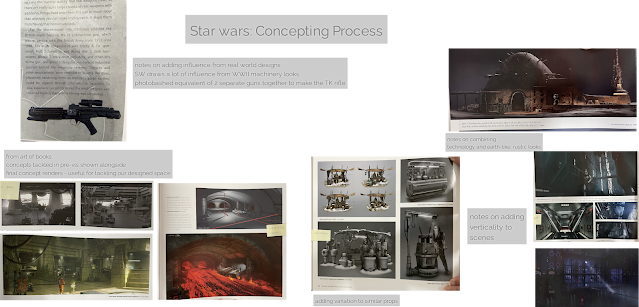Final Animatic:
Team Progress:
With all assets completely done modeling, the team moved onto Polish for the last 2 weeks of the project. During this final sprint, all textures were fully completed, more decals for graffiti and blaster scorch marks were made for set dressing, lighting received a 3rd and 4th pass, and animation was finalized for real this time.
However, Motion Builder had Different Plans.
After many many hours of wailing and gnashing of teeth (and about 20 retries on looping the walk cycle of the troopers only to end in bitter defeat), the motion capture data was finally cleaned, skating was minimized, the blaster was constrained to the hand and the secondary hand was constrained to the blaster.
In Unreal, the Trooper and the DC-15a Blaster Prop was socketed together in a Blueprint and placed in the level. And then put through another round of additive animation.
Finally, the Sequence was reviewed over and over until my eyes bled and I still somehow missed that the walker stopped in frame and froze for the last half of the animatic. The walker ultimately got a final (Final polish v02 for real this one) pass and everything rendered out nice and neat (after...weeks of not rendering out nice OR neat. At all).
The animatic ultimately ended up being 17 seconds of cinematic cutscene, 1 march cycle offset on 7 different troopers, an Idle Trooper animation, and the Main Trooper Highlight animation, completed in motion builder, plus the additional animation of the Walker, all done natively in Unreal with a custom made control rig.
Eric Wiley ; 3D Character Artist - Tank Trooper
Justin Diaz ; 3D Environment Artist
Haley Kroppman ; 3D Prop Artist - DC-15a Rifle Blaster
Kirsten Futch ; 3D Hard Surface Prop Artist
and a huge shoutout to my SFX Designer, Yegues Shettini






















